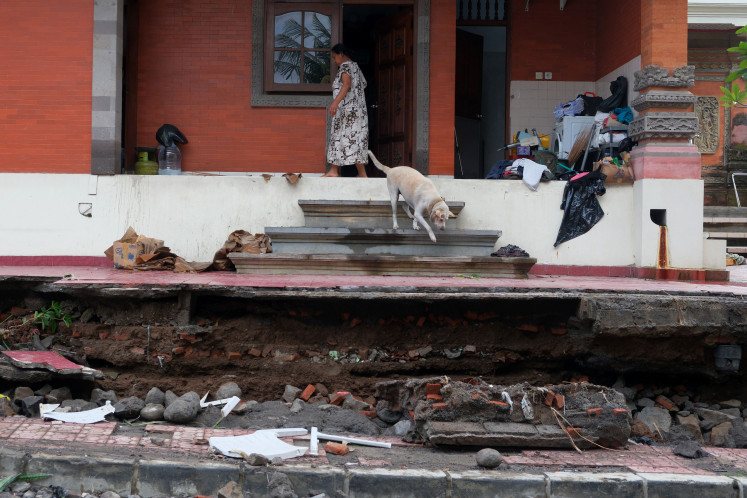Popular Reads
Top Results
Can't find what you're looking for?
View all search resultsPopular Reads
Top Results
Can't find what you're looking for?
View all search results‘Phinisi’ boats Bugis-Makassar masterpieces
Stunning: Phinisi ships stand on the sand, under construction in Bira in Bulukumba, South Sulawesi
Change text size
Gift Premium Articles
to Anyone
S
span class="caption" style="width: 398px;">Stunning: Phinisi ships stand on the sand, under construction in Bira in Bulukumba, South Sulawesi.Phinisi boats – a masterpiece of traditional Bugis-Makassar design – are exceptionally strong, and are famous for their ability to break through high waves and sail vast distances.
The wooden boats have sailed the Pacific to Japan and Vancouver as well as the Indian Ocean to Madagascar and to Australia.
For Bugis-Makassar people, phinisi boats have served as a means of transportation for generations. The boats are used not only to connect islands and countries but also for trading purposes.
The typical features of phinisi ships, with two masts and seven sails of different sizes in orderly arrangement, distinguish them from other traditional wooden boats in the country.
With their unique shape and strength, phinisi vessels are almost entirely built traditionally, in method and equipment.
The center of phinisi shipbuilding lies in two areas – Tana Beru and Bira – in Bulukumba regency, 180 kilometers south of Makassar in South Sulawesi.
In the regency dubbed butta panrita lopi or shipbuilders’ kampong, most people are skilled in building not only phinisi boats but also various types of wooden boats for island waters and motorboats for fishermen.
The boat craftsmen in Bulukumba do not have special engineering training. They don’t need complicated designs or technical calculations to determine the quantity of materials needed. Everything is handled according to traditional methods.
In building a ship or boat, craftsmen use a method that would be impossible in the mainstream shipbuilding industry. Bulukumba builders begin with the bottom and sides of the boat instead of the frame. But they rightly establish the boat’s balance so it will float perfectly when launched into the water.
“We just use our feelings based on our vision and judgment. That’s our guide in building a ship or boat,” said Muslim Baso, 66, a boat craftsman or panrita lopi, at his shipbuilding site in Bira village.
Expertise like Muslim’s is inherited through generations and centuries, a knowledge that is further honed through daily practice with the help of builders’ instincts and natural gifts.
Phinisi shipbuilders also faithfully observe local customs believed to guarantee the success of their work, particularly in phinisi building.
One of the customs strictly adhered to is the holding of rituals before building a boat and before its launch into the sea, asking for smooth construction and safety.
Constructing a phinisi boat usually takes months before the vessel can be used by the buyer or owner.
Massive: A phinisi ship ordered by a Polish citizen is the largest ever constructed in Bulukumba.Builders also support their workers. “Their feelings shouldn’t be hurt as this may disturb their work and be fatal to a ship’s safety. So we always pay their salaries before they start working so they can perform their job peacefully,” Muslim said.
Phinisi vessels prove that Bugis-Makassar tradition and culture have survived current technology and modernity. This is true in spite of the shrinking number of phinisi builders, as many have moved to other provinces or other countries. Only two big phinisi industrialists operate in Bulukumba, Muslim Baso in Bira and Abdullah in Tana Beru, the rest being a handful of small-scale businessmen.
The small number of phinisi producers is due to difficulties in finding proper materials. A phinisi boat needs several types of wood and not all are available now in Bulukumba or other areas of South Sulawesi but have to be brought from other provinces like ironwood from Southeast Sulawesi and ulin (a variety of ironwood) from Kalimantan.
To overcome this problem, Muslim proposed the Bulukumba administration cooperate with those provinces so as to guarantee a supply of wood for craftsmen. So far, material purchases are the biggest operational costs, as the wood is obtained by paying cash, which requires large capital.
“Without such cooperation and government assistance the number of phinisi producers will keep decreasing until their eventual disappearance, with the ships only continuing as memories,” Muslim said.











